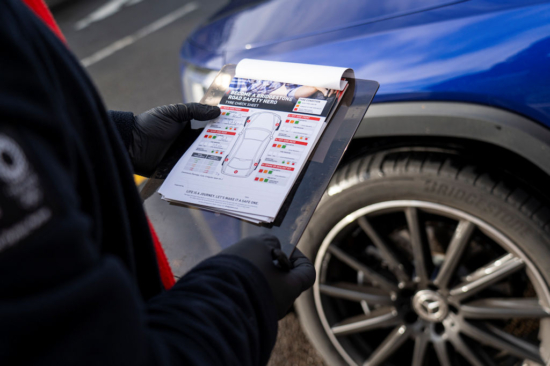Bridgestone makes ‘driving home for Christmas’ tyre safety plea
 Check your tyres before doing what Chris Rea sings about (Photo: Bridgestone)
Check your tyres before doing what Chris Rea sings about (Photo: Bridgestone)
Driving home for Christmas is more than an indispensable addition to the festive season playlist, it is something many of us will soon do. That worries Bridgestone after finding out that more than half the motorists making the drive home fail to recognise an ‘extremely serious’ risk associated with illegal tyre usage. Research carried out on Bridgestone’s behalf suggests that 54 per cent of motorists don’t regard driving on illegal tyres as potentially life threatening. Only 14 per cent describe tyres as the most important safety feature on their cars.
The survey amongst 2,000 drivers revealed that despite tyres being the only contact points between a vehicle and the road, 81 per cent admit to never checking their tyres for signs of wear or damage. Survey results such as this go some way to explain the 4,596 recorded total casualties from tyre-related incidents on roads in the past years and the presence of around 10 million illegal tyres on Britan’s roads each year.
In the run up to Christmas – and many people making more journeys to see loved ones over the holiday period – Bridgestone is renewing its call to get motorists to find a few minutes to check their tyres, in what could be the most thoughtful gesture this Yuletide.
“Driving over the Christmas holidays is something everyone should prepare for, says Andrea Maneti, Bridgestone’s North Region vice president. “It is not only about having the right tyres; the driver’s behaviour is also essential in these conditions as he or she needs to understand and adapt to different winter hazards. It is therefore crucial to not only prepare our vehicles, but also ourselves when the weather gets cold, as we are seeing at this time of year.”
Bridgestone’s tips for motorists are:
· Periodically check traction, or available grip, when driving in challenging conditions. Apply the brakes with moderate pressure to determine the available grip and modify your driving, if needed, to respond to ever-changing road conditions.
· Under-inflated tyres not only compromise motorists’ ability to brake and manoeuvre safely, but they also consume more fuel and wear out faster. Information on the recommended tyre pressure can be found in the operating manual, on the inside of the door pillars or under your fuel cap.
· The legal minimum tread depth is 1.6mm. Insert a 20p coin in the tread; if you can see the border, it’s time to change the tyres.
· Maximise available grip by separating driving manoeuvres when negotiating a curve. Brake to an appropriate speed while travelling in a straight line prior to a curve. This allows you to use all the available grip for negotiating the curve. Accelerate gradually when you are able to straighten the steering wheel at the exit of the turn.
· Avoid cruise control in wet, icy or snowy conditions. Maintain control of acceleration and deceleration at all times.
· Avoid driving in bad weather conditions. Your safety comes first.




Comments